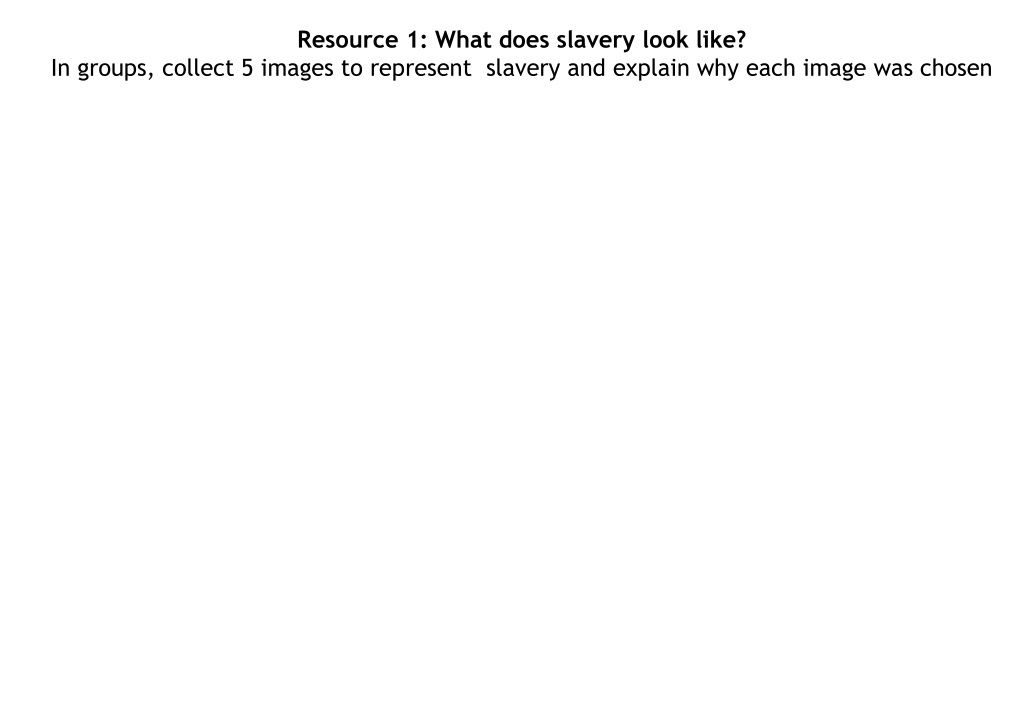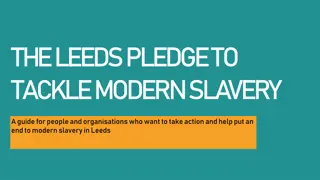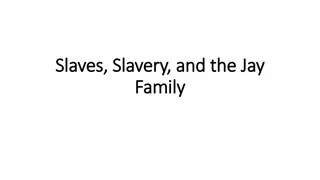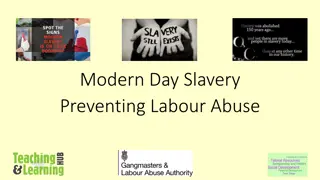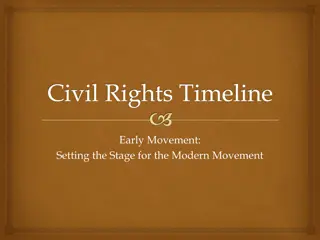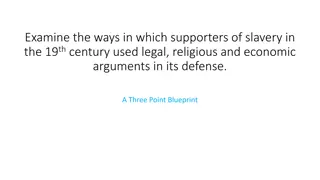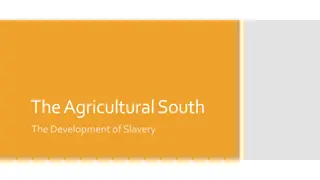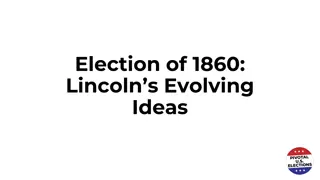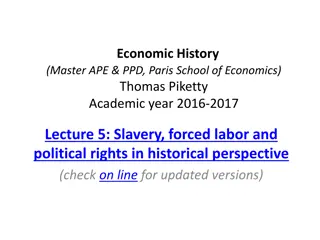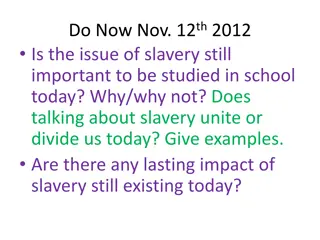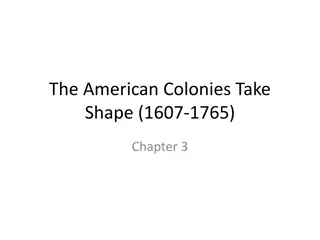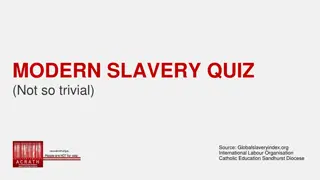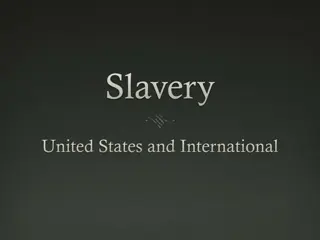Exploring Modern Slavery Through Case Studies
This collection of case studies delves into modern forms of slavery, highlighting efforts to combat exploitation and abuse in different regions and sectors. From Brazil's innovative anti-slavery system to the struggles and successes of indigenous communities and worker coalitions, these narratives shed light on the complexities and challenges in the fight against modern slavery.
Download Presentation

Please find below an Image/Link to download the presentation.
The content on the website is provided AS IS for your information and personal use only. It may not be sold, licensed, or shared on other websites without obtaining consent from the author. Download presentation by click this link. If you encounter any issues during the download, it is possible that the publisher has removed the file from their server.
E N D
Presentation Transcript
Resource 1: What does slavery look like? In groups, collect 5 images to represent slavery and explain why each image was chosen
Resource 2: Concept Map of Slavery What is slavery?
Resource 4: From Conquistador to Champion: Should we remember Bartolom de las Casas? Pros Cons
Resource 3: From Conquistador to Champion: Should we remember Bartolom de las Casas? Create a list of questions. Image Credit: Daviduk32, CC BY-SA 4.0 <https://creativecommons.org/licenses/by-sa/4.0>, via Wikimedia Commons
Resource 5: Case Studies Case Study #1: Brazil The Brazilian anti-slavery system is one of most innovative, and has been recognised as an example by international bodies like the ILO. The roots of that system lie in social, religious and labour activism that used the concept of slave labour as a political tool to confront the power of vested interests, among them the military regime, national agribusiness, and transnational corporations. The campaign gained state recognition in 1995, but ramped up significantly in 2003 with the election of leftist President Lula da Silva. Brazil s flying squad of labour inspectors has helped to free almost 60,000 workers, and the activism of labour prosecutors sought to go beyond criminal prosecution to chart other approaches. Among the key innovations was the creation of a Dirty List to hold companies and individuals accountable for exploitation. In recent years, however, the system has come under threat from the government of Jair Bolsonaro. For more information, go to Reporter Brasil: https://reporterbrasil.org.br/english/ Case Study #2: The Guaran in Bolivia Following the 1892 Kuruyuqui Massacre, communities of indigenous Guaran in Bolivia s eastern regions were entrapped in a system of inter-generational debt bondage on large farms (haciendas). From the 1980s onwards the Guaran began organising, forming an association that demanded land reform as protection against exploitation. From 2006 a combination of indigenous mobilisation, interventions by the Inter-American Commission of Human Rights, and the election of a leftist government under President Evo Morales, saw this situation change. Accelerated land titling and limited indigenous self-government brought about a dramatic reduction in debt servitude among the Guaran . Nevertheless, the hard-won autonomy of the Guaran is increasingly eroded by the ramping up of natural gas operations within their territories. Case Study #3: The Coalition of Immokalee Workers For many years, migrant workers in Florida s fruit and vegetable sector suffered exploitation and abuse, including low pay, unsafe conditions, sexual exploitation, violence, trafficking and debt bondage. This began to change in the 1990s with the formation of the Coalition of Immokalee Workers to fight for wage increases and human rights. In 2011 the CIW took this further with the formation of the Fair Food Program, through which they upended the power imbalance between workers and farm owners by targeting fruit and vegetable buyers: the large supermarket chains. FFP resulted in better conditions and pay for workers, and has extended to other states and sectors. Along with a worker-driven approach to anti-slavery, CIW s bottom-up activism has pioneered a preventative approach to modern slavery.
Resource 6: Card Sort Letter writing to local politicians Attending protests Developing a petition Challenging racism Considering products which are associated with exploitation Boycotting products Writing an article to highlight the issue Finding out more about an issue to make more informed choices Consuming less Demanding that slavery reparations are paid by countries who have benefited from slavery Supporting organisations that address issues Supporting human rights defenders working to address land rights Using social media to raise awareness for issues Demanding Mandatory Human Rights and Environmental due diligence legislation Rescuing those in conditions of slavery and unfreedom Working with others to plan forms of collective action Supporting labour unions and amplifying worker voices Protecting survivors Tackling climate change Opening borders to all who wish to migrate Raising funds for organisations Demanding reparations for historic slavery Supporting universal basic income Arresting and prosecuting those who exploit others Your own idea!
